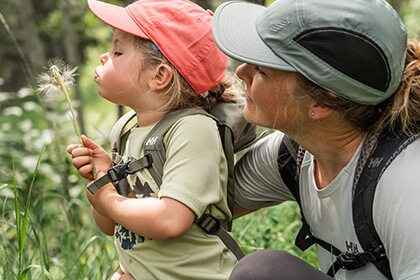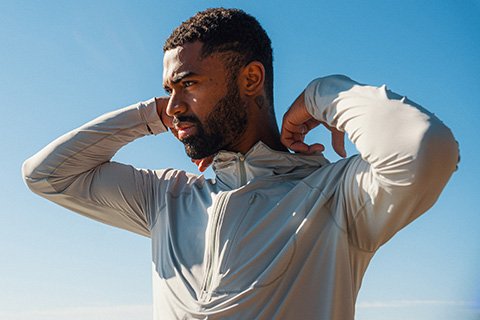
How to properly fit a backpack
April 15, 2024 2 min read
Ensure ultimate comfort on your adventures with our expert guide to backpack fitting. Learn to distribute weight, size correctly, and adjust for a perfect fit.
Introduction to backpack fitting
If you need a backpack, but you’re not sure how to choose the right fit or adjust it, you’ve come to the right place. Who better to explain how to fit a backpack than the person who designed it? Darren Lum, Design Manager and Lead Designer for Bags & Backpacks at Helly Hansen, unveils the secrets to achieving the perfect backpack fit.
Why the right fit is essential for your comfort and health
Whether you're trekking through the mountains, commuting to work, or out for a day hike, understanding how to properly fit and adjust your backpack is key for comfort and efficiency. No matter the adventure, a great fit prevents backache, discomfort, and allows for optimum weight distribution so you feel confident and stable on your feet – thereby also preventing injury.
Understanding the basics of backpack sizing
We’ll take you through the key steps to choosing the right backpack and ensuring that it fits perfectly. From sizing to strap adjustments and load distribution, learn how to optimize your backpack for any situation. Don't let a badly fitted backpack slow you down. Read on to transform your carrying experience and lift your adventures to the next level!
Mastering backpack fit: A guide by Darren Lum
Getting started
Darren starts by advising to loosen all the straps on your backpack. This includes the hip belt, shoulder straps, load lifters, and sternum strap. A top tip is to add some weight to the backpack to help facilitate a better fit.
Adjusting for torso length
If your backpack has an adjustable back or torso length, set this next. Measure from your C7 vertebrae down to the part of your spine that is even with your hipbones. This measurement helps ensure the backpack fits your torso size perfectly.
Securing the hip belt
Put on the backpack and buckle the hip belt. Tighten it so it fits snugly and comfortably on your hip bones. Darren emphasizes that this is where a significant portion of the backpack’s weight should rest, reducing the strain on your shoulders and back.
Shoulder straps and load lifters
Adjust your shoulder straps by pulling the webbing adjusters down and back until they fit snugly against your shoulders. Ideally, the bottom of the shoulder strap should end around the midline of your side. Adjust the load lifter straps next. These should be at a 30 to 45-degree angle for multi-day packs or slightly less for day packs, pulling the weight of the backpack closer to your body.
Sternum strap for stability
The sternum or chest strap is key for stabilizing the backpack and preventing the shoulder straps from sliding off. Adjust it to be snug but not constricting, allowing comfortable breathing while moving.
Final adjustments and tips
Walk around with the backpack for a few minutes to ensure it feels balanced and comfortable. Darren notes that as you hike or as the terrain changes, you may need to readjust your backpack to maintain comfort and stability.
Conclusion
With our expert advice, you’re now equipped to fit your backpack perfectly, ensuring comfort and balanced weight distribution for all your adventures. Remember, the right fit not only enhances your hiking experience but also protects your health. Happy hiking!
Bonus: How to pack your backpack
Now your backpack fits properly. Learn how to pack efficiently and distribute the weight in the most effective way here
explore helly hansen backpacks


May 27, 2025 4 min read
Hiking for beginners
New to hiking? Learn step-by-step how to enjoy the outdoors confidently with these beginner-friendly advice.

March 05, 2025 4 min read
Everything You Need To Know About UPF Clothing
Learn all about UPF clothing, how it works, and why it’s essential for sun protection. Discover care tips and answers to FAQs like "Does UPF wash out?"